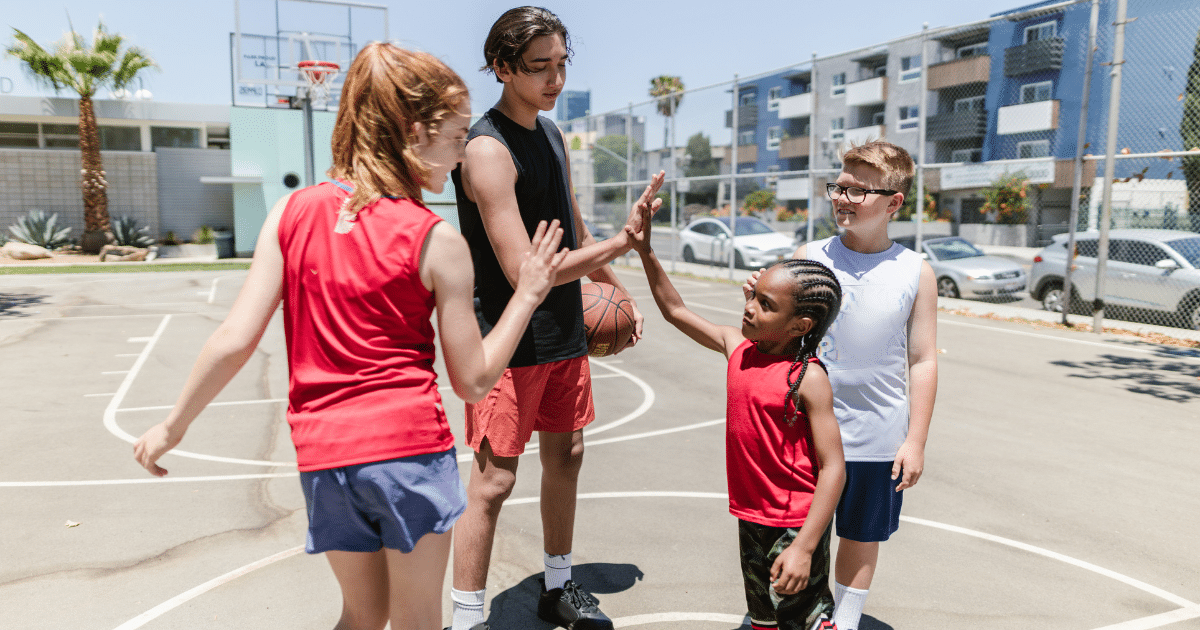Increase Kids Physical Activity for Through Playground Zoning?
It’s a known fact that kids these days are spending less time outside playing and more time with their face plastered in technology—video games, iPads, iPhones, etc. There are several organizations that are trying to get kids to be more active through play (such as the NFL’s Play 60 program), whether it be after school programs, recreational sports leagues, and now the idea of zoning school playgrounds. Unfortunately, we have a long way to go in achieving “success” when it comes to kids physical activity.
In this article, we will dive deeper into the importance of kids physical activity. If you think you’re kid is getting enough physical activity, you may want to think again…

Disclaimer: This article is for informational purposes only and is not meant to treat or diagnose any condition. It is recommended that you speak with your doctor before starting any exercise program, changing your daily nutrition, or adding any supplements to your regimen.
What is Considered Physical Activity?
Physical activity refers to any bodily movement that requires energy expenditure. This includes activities ranging from everyday tasks like walking and climbing stairs to more structured and purposeful activities like exercise and sports. Physical activity can be classified into several categories:
- Aerobic or Cardiovascular Exercise: Activities that increase your heart rate and breathing, such as walking, running, cycling, swimming, and dancing. These exercises improve cardiovascular health and endurance.
- Strength Training or Resistance Exercise: Involves activities that build and strengthen muscles, like weightlifting, resistance band exercises, and bodyweight exercises (e.g., push-ups, squats).
- Flexibility Training: Includes activities that improve your flexibility and range of motion, such as stretching exercises, yoga, and Pilates.
- Balance and Stability Exercises: Focus on improving coordination and preventing falls, including exercises like tai chi or specific balance training routines.
- Everyday Activities: Regular daily movements like walking to work, gardening, taking the stairs, and household chores also contribute to overall physical activity.
Meeting recommended physical activity guidelines has numerous health benefits, including improved cardiovascular health, muscle strength, flexibility, mental well-being, and a reduced risk of chronic diseases like heart disease, diabetes, and obesity.
The World Health Organization (WHO) and various health authorities typically recommend a minimum of 150 minutes of moderate-intensity aerobic activity or 75 minutes of vigorous-intensity aerobic activity per week, along with muscle-strengthening activities on two or more days per week. However, any amount of physical activity is better than none, and individuals should choose activities they enjoy and can sustain over time.

How Much Physical Activity Do Needs Need?
The amount of physical activity a person needs can vary based on factors such as age, health status, and personal fitness goals. However, health organizations, including the World Health Organization (WHO) and various national health agencies, provide general guidelines for adults.
As of my last knowledge update in January 2022, here are the WHO recommendations for adults:
- Aerobic Activity:
- At least 150 minutes of moderate-intensity aerobic activity throughout the week, or
- At least 75 minutes of vigorous-intensity aerobic activity throughout the week, or
- An equivalent combination of moderate- and vigorous-intensity activity.
- Muscle-Strengthening Activity:
- On two or more days a week, adults should engage in muscle-strengthening activities involving major muscle groups.

It’s important to note that these are general recommendations, and individuals may need more or less depending on their specific circumstances. Additionally, older adults and individuals with certain health conditions may have different guidelines, and it’s advisable to consult with a healthcare professional before starting a new exercise program.
Children and adolescents also have specific guidelines for physical activity. As of my last update, the Centers for Disease Control and Prevention (CDC) recommended that children and adolescents aged 6 to 17 years should engage in at least 60 minutes of moderate-to-vigorous intensity physical activity daily, including aerobic activities and muscle-strengthening and bone-strengthening activities.
You Should Increase Your Kids’ Activity Level
If you were to watch children playing during recess you would see less playing and more standing around than ever before. Kids physical activity today is nothing like back when we were kids. It seems like back in the day kids were more imaginative with their play time as well.
While kids will say how much they love recess, it’s more for the social aspect rather than the “play”. Sure, you see kids running around being kids—throwing the football, playing basketball, kicking the soccer ball, etc. But then there are groups of kids just standing around or sitting. It’s not gender specific either, it’s kids across the board.

The University of Missouri has said “research has proven that active children are healthy children. Moreover, past research has proven that activity helps academic performance. By reworking traditional recess games to be more vigorous, children are able to increase their physical activity in a really easy way, improving their health and doing better in school.”
One idea that the University of Missouri came up with was “zoning” the playground into sections. They feel that zoning is a very proactive way to have schools take an interest in children’s health and wellness by making sure they stay active under their watchful eye during the day. Parents are putting their trust in the school, and while not a babysitter by any means, schools do have a responsibility to help teach the kids that go there how to stay active and healthy.
Click here to continue reading…


*Disclosure: This article may contain affiliate links or ads, which means we earn a small commission at no extra cost to you if you make a purchase through these links. These commissions help support the operation and maintenance of our website, allowing us to continue producing free valuable content. Your support is genuinely appreciated, whether you choose to use our links or not. Thank you for being a part of our community and enjoying our content.
PLEASE CONSIDER SHARING THIS ON YOUR SOCIAL MEDIA TO HELP OTHERS LEARN MORE ABOUT THIS TOPIC. SIMPLY CLICK BELOW!

